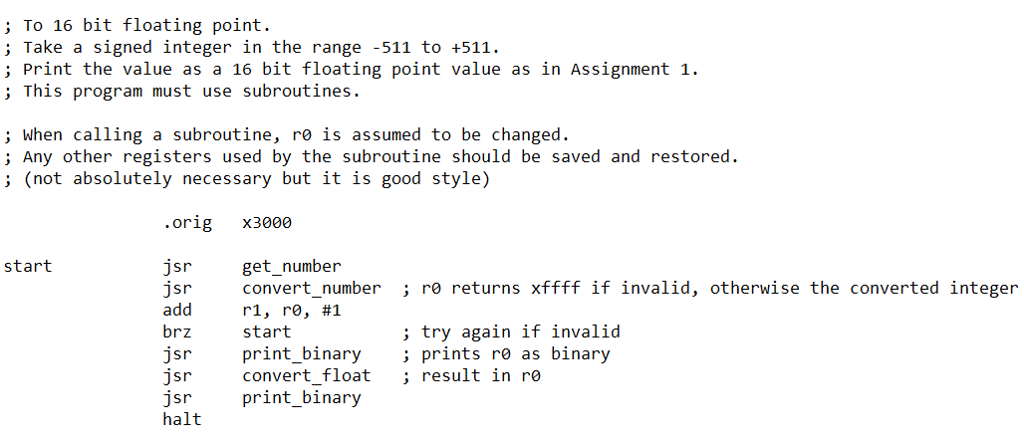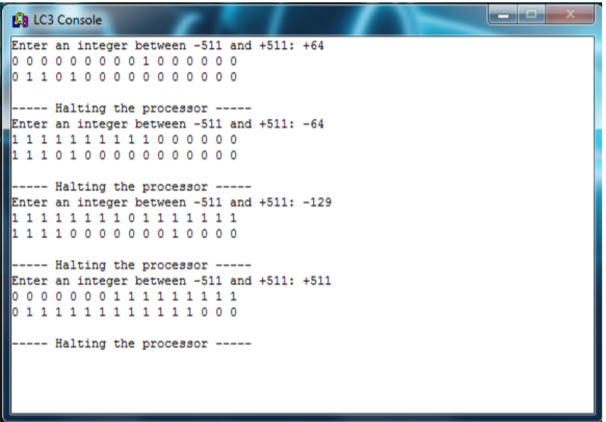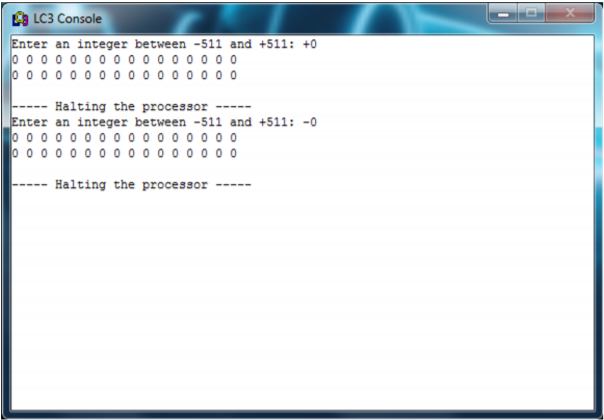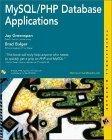Question
This program accepts an integer between -511 to +511 typed in by user. It works until a valid number is entered, then the program prints
This program accepts an integer between -511 to +511 typed in by user. It works until a valid number is entered, then the program prints the binary version of the number as an integer and follows it by printing the binary representation of the number as a 16-bit floating point number.
Bit 15 is the sign bit.
Bits 14 - 11 is the biased exponent (bias of 7).
Bits 10 - 0 is the mantissa (fractional part). Remember there is an implicit 1 for the fractional part.
You must use subroutines for this program.
To assist you, here is some code that must be used, you must not add any lines of code before the halt instruction.

Example input and output.

Zero is a special case.

When writing assembly language the temptation is to treat most values as globally accessible. The solution to this is to pass parameters and return values on the stack as in higher level languages. For this assignment you may use globally accessible values when that makes sense. You should save all registers (except R0) when you enter a subroutine and restore them on exit. This is not strictly necessary in this assignment because the top-level program doesn't depend on registers maintaining their values. On a related point most programming languages keep all of the code separated from the data. In assembly language that is also a good idea but for this assignment it may be easier if you keep data associated with a subroutine near that subroutine. It makes it easier for you to read and fix your code. Also many of the LC-3 addressing modes limit offsets from the current value of PC to 256 words.
Thank you so much for your time and help!!!
; To 16 bit floating point. ; Take a signed integer in the range -511 to +511 ; Print the value as a 16 bit floating point value as in Assignment 1 ; This program must use subroutines. ; When calling a subroutine, ro is assumed to be changed. ; Any other registers used by the subroutine should be saved and restored (not absolutely necessary but it is good style) .orig x3000 get_number convert_number ; r returns xffff if invalid, otherwise the converted integer r1, r0, #1 start start jsr add brz jsr print_binary; prints r as binary Jsr ; try again if invalid convert float; resul print_binary t in ro sr halt ; To 16 bit floating point. ; Take a signed integer in the range -511 to +511 ; Print the value as a 16 bit floating point value as in Assignment 1 ; This program must use subroutines. ; When calling a subroutine, ro is assumed to be changed. ; Any other registers used by the subroutine should be saved and restored (not absolutely necessary but it is good style) .orig x3000 get_number convert_number ; r returns xffff if invalid, otherwise the converted integer r1, r0, #1 start start jsr add brz jsr print_binary; prints r as binary Jsr ; try again if invalid convert float; resul print_binary t in ro sr haltStep by Step Solution
There are 3 Steps involved in it
Step: 1

Get Instant Access to Expert-Tailored Solutions
See step-by-step solutions with expert insights and AI powered tools for academic success
Step: 2

Step: 3

Ace Your Homework with AI
Get the answers you need in no time with our AI-driven, step-by-step assistance
Get Started


